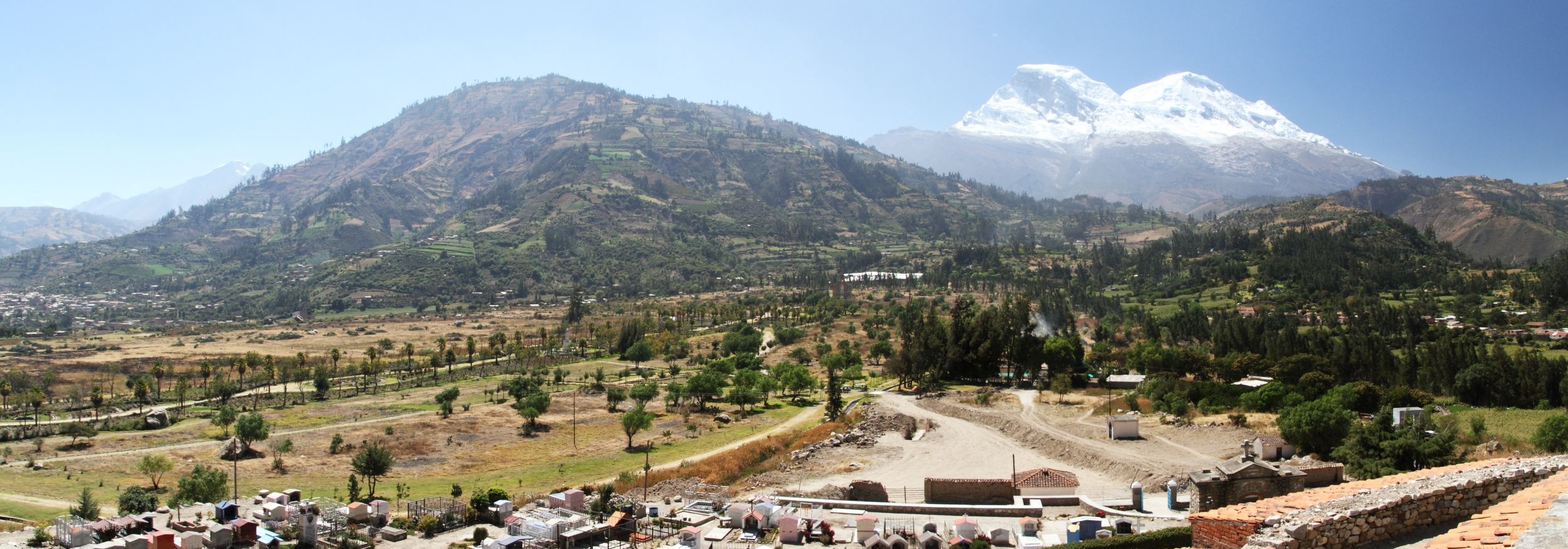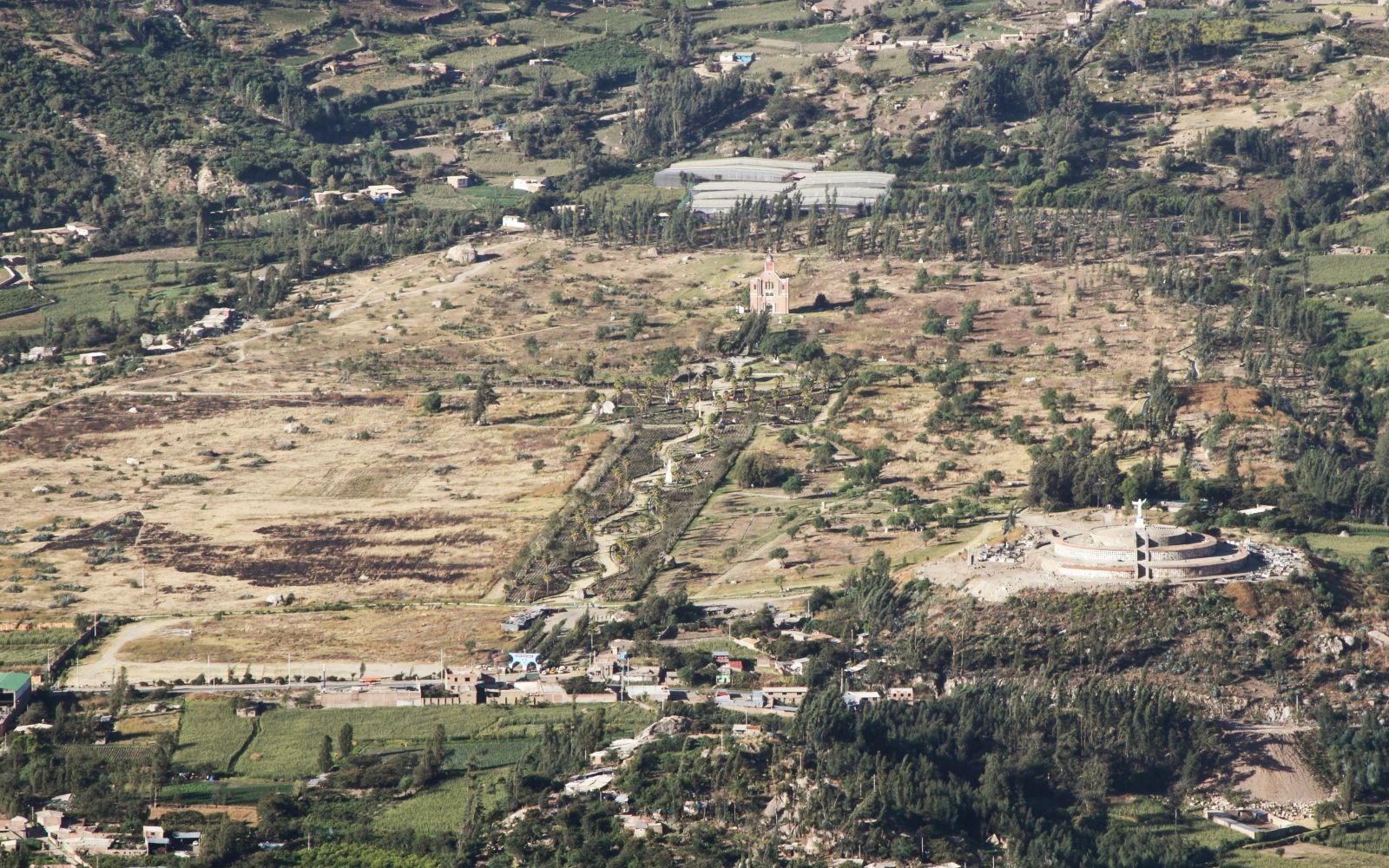

At the base of Nevado Huascarán, with 6768 m the highest peak of Peru and tropical areas at all, one can find the village of Ranrahirca on a huge alluvial fan and the town of Yungay slightly elevated a few kilometres farther north. Both are seemingly peacefully embedded in a fine Andean cultural landscape. More than 4000 vertical metres separate the lush valley of the Río Santa and the two ice-clad summits of Huascarán. But what is the reason that Yungay is also known as Ciudad sepultada, which means buried town? And how is this related with Huascarán at a distance of almost 20 kilometres? In 1962 and 1970, this area was the scene of dramatic happenings, which have reshaped the valley and deeply engraved themselves in the mind of the local population.
By clicking in the title photo you can change your perspective on Yungay and its surroundings.

















